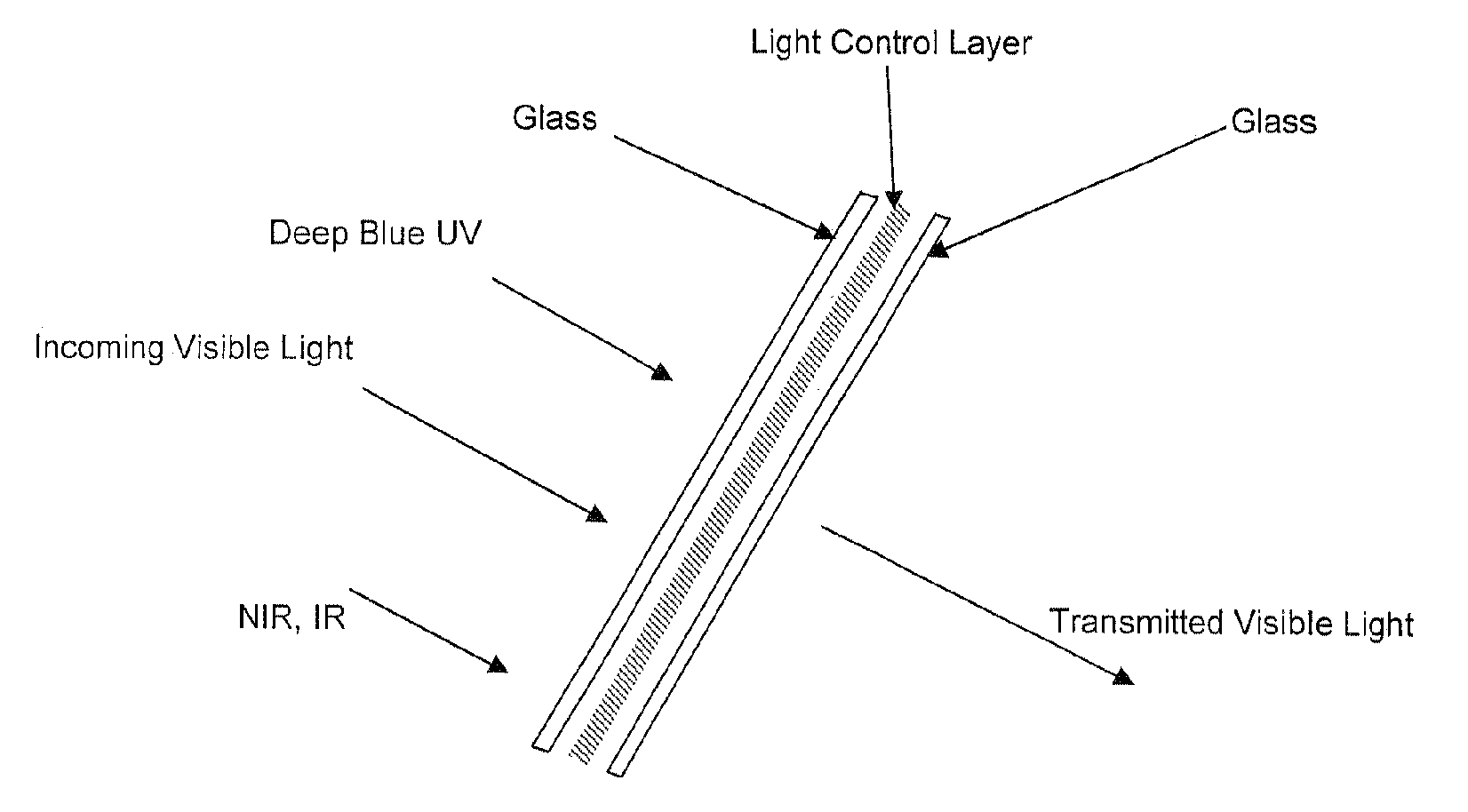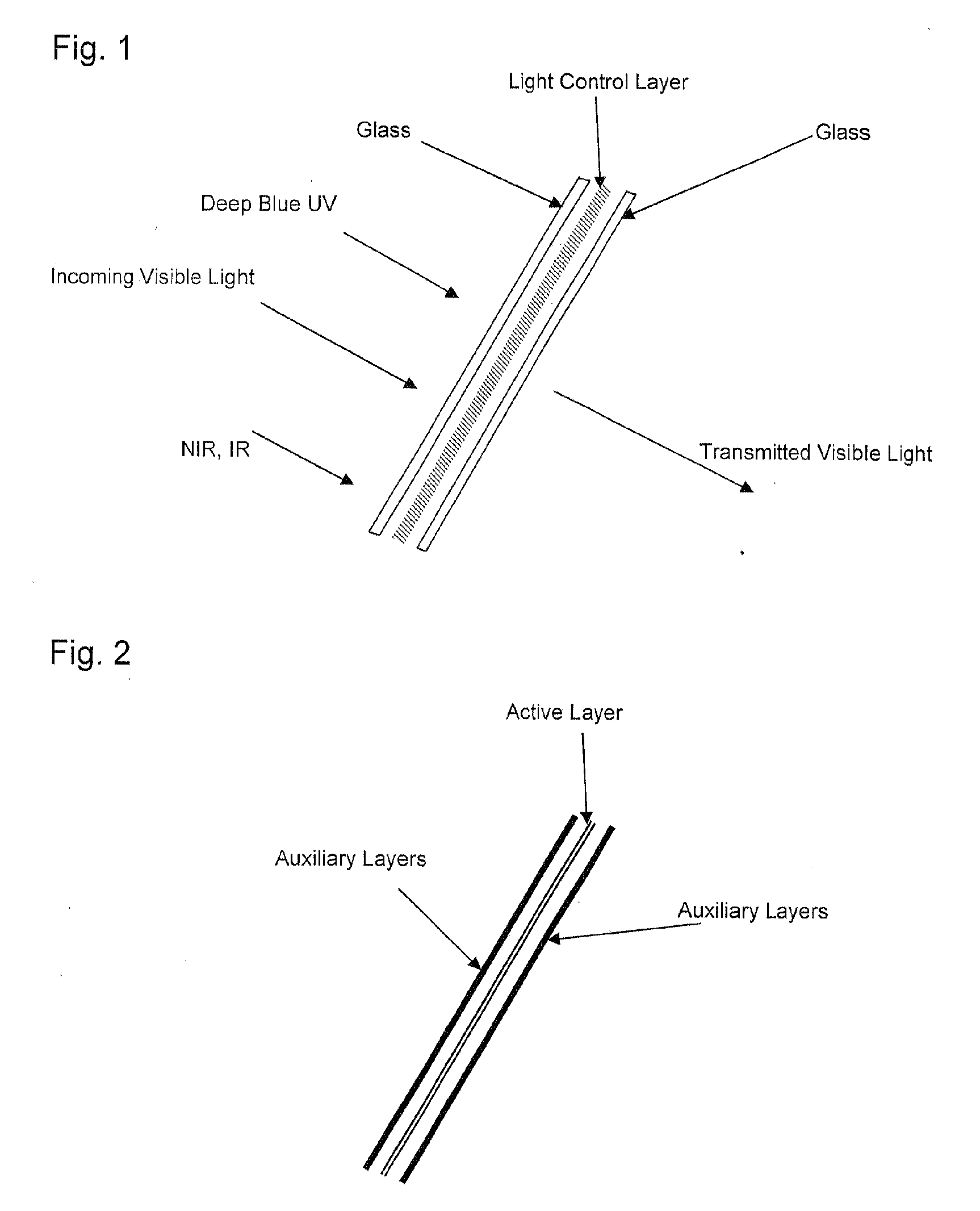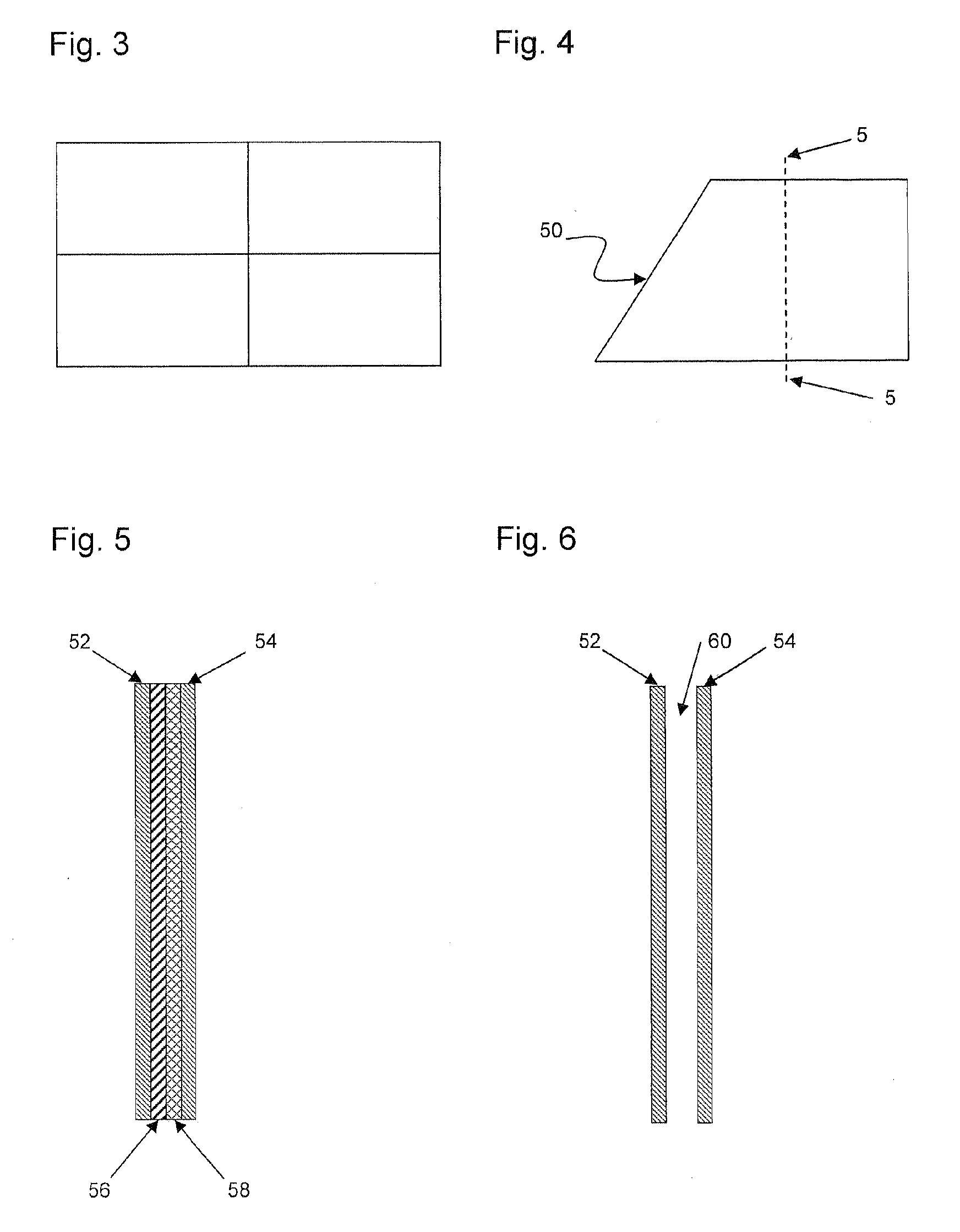Adjustably opaque film for substantially smooth surface
a film and substantially smooth surface technology, applied in the field of adjustable or variable window tinting system, can solve the problem of fixed tint of windows, reduce the temperature rise of the interior, reduce the energy and cost of desired effect, and reduce the effect of minimization or elimination
- Summary
- Abstract
- Description
- Claims
- Application Information
AI Technical Summary
Benefits of technology
Problems solved by technology
Method used
Image
Examples
Embodiment Construction
[0090] The control of visible light transmittance through the light transmission control layer derives from the ability that the optical properties of an active layer, which is the central layer of the light transmission control layer, can be manipulated using an external stimulus such as an electrical field. Active layers, such as liquid crystals, can change their optical properties such as their birefringence and hence the polarization state of the light traveling through the active layer, when an external stimulus such as an electrical field is applied.
[0091] More explicitly, the application of an external stimulus such as an external electrical field to the liquid crystal layer causes liquid crystal molecules, such as those liquid crystals composed of rod-shaped molecules, to reorient. This molecular reorientation in the liquid crystal layer causes a change in the index of refraction of the light traveling through the glass. As a result, there is a change in the polarization of...
PUM
| Property | Measurement | Unit |
|---|---|---|
| thickness | aaaaa | aaaaa |
| pre-tilting angle | aaaaa | aaaaa |
| pre-tilting angle | aaaaa | aaaaa |
Abstract
Description
Claims
Application Information
 Login to View More
Login to View More - R&D
- Intellectual Property
- Life Sciences
- Materials
- Tech Scout
- Unparalleled Data Quality
- Higher Quality Content
- 60% Fewer Hallucinations
Browse by: Latest US Patents, China's latest patents, Technical Efficacy Thesaurus, Application Domain, Technology Topic, Popular Technical Reports.
© 2025 PatSnap. All rights reserved.Legal|Privacy policy|Modern Slavery Act Transparency Statement|Sitemap|About US| Contact US: help@patsnap.com



